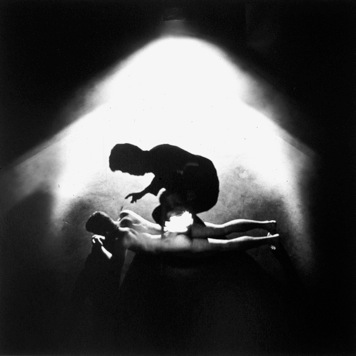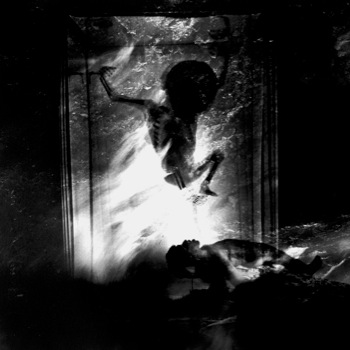
D O N G R E G O R I O A N T Ó N
by K a y t i e J o h n s o n
from Contemporary Chicana and Chicano Art, Volume 1
Don Gregorio Antón maintains that the facts of his life are far less important than his art and ideas. Art has long been his major preoccupation, at least in part because during his childhood it was “forbidden” in his family, dismissed as a useless pursuit. By the age of seventeen he had looked through a camera for the first time and knew he wanted to be a photographer. He asked his father for permission to enroll in a high school photography course, permission that was denied unless he could find a single book by a Chicano photographer. No such book could be found and it was only when the course instructor helped Antón convince his father of the success of Manuel Álvarez Bravo that he was allowed to take the course after all. He went on to excel in his chosen craft, studying at Rio Hondo College (Whittier, CA) and then at San Francisco State University, where he earned his B.A. in interdisciplinary creative arts in 1978 and his M.A. in fine arts in 1980. He then embarked on a busy teaching schedule, simultaneously continuing to produce his personal works. He told a journalist that he had been influenced by W. Eugene Smith and the Japanese photographer Eikoh Hosoe, adding: “It was their passion for life rather than their photographs that influenced me.”
In his meticulously constructed photographs, Antón acts as both director and actor, staging highly autobiographical images that function as pages in a visual diary informed by his personal history. Allowing memory to overtake the reality of the medium of photography, Antón delves into the realm of the subconscious, creating images with a performative force that is punctuated by an undercurrent of lyrical mysticism. Engaging in a Jungian psychological mode of artistic creation, one in which the contents of his consciousness are illuminated and interpreted, Antón creates images that transcend the personal and elicit the collective.
In En busca de cosas perdidas / Remembrance of Things Past, Antón deals directly with the unconscious, creating a dreamlike landscape that functions as an inner document of self and a visual repository of memory. A clothed male figure, shrouded in darkness, is depicted crouching over the back of a nude male figure that is seen lying on his stomach. The light that floods the scene from above creates a highly dramatic chiaroscuro effect, one that references spiritual light in a manner similar to that employed in paintings with religious themes by the Italian painter Caravaggio (1573-1610). The point of a contact between the two figures, here taking the form of a burning white light that can be seen in the center of the composition, is highly suggestive of healing-in this case, of the tradition curanderismo. A form of Latino folk medicine that stresses the use of herbs and other natural substances and emphasizes the strong connection between religion and health within the Mexican American community. A visual text that documents a private ritual of healing, the image pays homage to the artist’s grandmother, herself a curandera, who had a profound impact upon Antón’s life.
Antón’s grandmother is again referenced in Sueños de sueños / Dreams of Dreams, a photograph in which a barrida (cleansing ritual) that she conducted to rid her grandson of intense nightmares is re-created. The presence of an embryonic figure and a reclining adult figure references Antón description of the ritual, one in which he “was taken to the very core of my self and saw my birth, saw how I emerged from the darkness of a door that was left open. This door was the root of my nightmares.” Given the option of closing the door, the artist decided to leave it open, a decision that he felt would allow him to probe more deeply into other realities. This work also elucidates Antón’s stylistic and conceptual debt to the work of the Japanese photographer Eikoh Hosoe (b. 1933), whose powerful black-and-white photographs also create silent, dreamlike, hypnotic spaces in which issues of performance and poetry are created through the directorial construction of the artist.
Passionate about sharing his vision with others, Antón has devoted considerable time and attention to his teaching and lecturing activities. His work figures in the collections of museums in the United States, Mexico, and Europe.
Kaytie Johnson is the Director and Curator of University Galleries, Museums and Collections at Depauw’s University Richard E. Peeler Art Center.
__________________________

